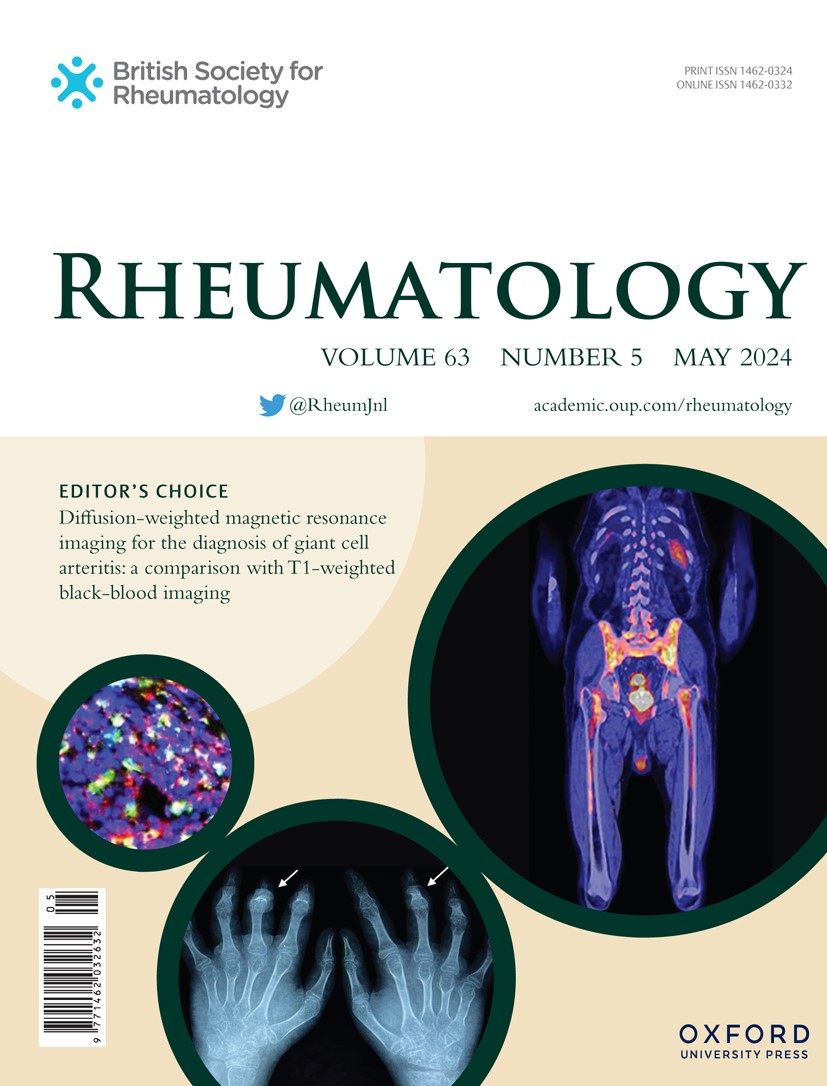在检测轻度软骨损伤方面,关节镜比核磁共振成像具有更高的鉴别能力
IF 4.7
2区 医学
Q1 RHEUMATOLOGY
引用次数: 0
摘要
目的 确定目前的磁共振成像(MRI)是否能检测出膝关节疼痛患者在诊断性关节镜检查中观察到的浅表软骨病变,这些患者尚未被诊断出患有关节疾病。方法:招募膝关节疼痛持续时间超过三个月且原因不明的成年患者,对其进行治疗/诊断性关节镜检查。记录人口统计学和临床数据、疼痛评估、核磁共振成像以及关节镜手术过程中对股骨内侧髁软骨损伤的观察。根据核磁共振成像和/或直接观察到的软骨损伤情况对患者进行分类。研究了这些评估之间的一致性及其与年龄和患者疼痛报告之间的差异。结果 在招募的 95 名患者中,48 人在关节镜检查中发现股骨内侧髁(MFC)有病变,而只有 24 人在核磁共振扫描中发现病变。与没有软骨损伤的患者相比,通过核磁共振检查发现软骨损伤的患者的股骨内侧髁软骨厚度明显较低。在关节镜检查中发现软骨病变的患者中,核磁共振成像也显示病变的患者与核磁共振成像未显示病变的患者相比,软骨厚度较低,Outerbridge 评分较高。与仅通过关节镜检查发现软骨损伤的患者相比,在核磁共振成像中发现软骨损伤的患者年龄明显偏大,且报告的疼痛程度更高。结论 尽管核磁共振成像技术有了长足的进步,但关节镜检查在识别该技术无法识别的轻度软骨结构性病变方面仍具有优势。本文章由计算机程序翻译,如有差异,请以英文原文为准。
Arthroscopy has a higher discriminative capacity than MRI in detecting mild cartilage lesions
Objectives To determine whether current magnetic resonance imaging (MRI) could detect superficial cartilage lesions that are observed during diagnostic arthroscopy in patients with knee pain who have not been diagnosed with joint disease. Methods Adult patients with knee pain of unclear origin lasting more than three months, scheduled for a therapeutic/diagnostic arthroscopy were recruited. Demographic and clinical data, pain assessment, MRI imaging, and observations of cartilage damage in the medial femoral condyle during arthroscopic procedure were documented. Patients were categorized based on the presence of cartilage damage assessed via MRI and/or direct visualization. Concordance between these assessments and its variation with age and patient-reported pain were examined. Results Out of the 95 patients recruited, 48 exhibited lesions in the medial femoral condyle (MFC) during arthroscopic examination, while only 24 of them showed lesions on the MRI scans. The thickness of the cartilage in the MFC was significantly lower in patients with cartilage damage detected by MRI compared with those without. Among patients with cartilage lesions identified during arthroscopy, those also showing lesions on the MRI had lower cartilage thickness and higher Outerbridge score than those without lesions on the MRI. Patients with detectable cartilage damage on the MRI were significantly older and reported higher levels of pain than those with damage detected only by arthroscopic examination. Conclusion Despite significant technological advancements in MRI, arthroscopy still proves superior in identifying mild structural cartilage lesions that are not identifiable by this technique.
求助全文
通过发布文献求助,成功后即可免费获取论文全文。
去求助
来源期刊

Rheumatology
医学-风湿病学
CiteScore
9.40
自引率
7.30%
发文量
1091
审稿时长
2 months
期刊介绍:
Rheumatology strives to support research and discovery by publishing the highest quality original scientific papers with a focus on basic, clinical and translational research. The journal’s subject areas cover a wide range of paediatric and adult rheumatological conditions from an international perspective. It is an official journal of the British Society for Rheumatology, published by Oxford University Press.
Rheumatology publishes original articles, reviews, editorials, guidelines, concise reports, meta-analyses, original case reports, clinical vignettes, letters and matters arising from published material. The journal takes pride in serving the global rheumatology community, with a focus on high societal impact in the form of podcasts, videos and extended social media presence, and utilizing metrics such as Altmetric. Keep up to date by following the journal on Twitter @RheumJnl.
 求助内容:
求助内容: 应助结果提醒方式:
应助结果提醒方式:


